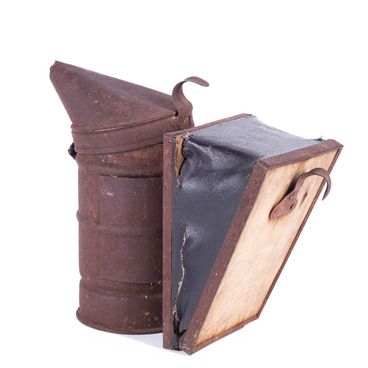Weaving originated in the late Neolithic period, IV–III millennium B.C., and is an extremely old handicraft. It has gone through a long, difficult development path: at first, this craft could only satisfy the minimum demand for clothing at best, but by constantly improving the techniques and technologies used hand weaving has risen to the level of an art form.
One of the most important contrivances for home weaving is the reed. This device takes the form of a fine comb. There are 2 types of it: a reed that is part of the loom and a hand-held reed for creating belts and bands. The loom’s reed teeth were usually made in the form of thin wood chips of equal thickness, and regular in shape. They were fastened at the ends with the help of sticks, whose length was equal to the length of the entire reed. The teeth were located equidistant from each other. The reed is used for simultaneously condensing and trimming the weft thread transverse to the warp of the woven fabric. That is how the reed helps weave a dense fabric that is symmetric with respect to the center.
It is impossible to imagine working on a weaving loom without a reed, something with which carpets, towels, curtains, and solid woven fabrics have been produced since ancient times. In addition to the reed, an important actuator in the loom is the heddle, which consists of two wooden planks and moves up or down, raising or lowering the warp threads, and creates a shed into which the weft thread is inserted. The warp threads, intertwining with the weft thread, create a fabric that is wound onto a weaving beam.
In the past, weaving was much more dependent on the regional availability of raw materials. In Bashkiria, along with plant fibers, woolen yarn was widely used to produce textiles. Fabrics and carpets were usually woven from sheep’s wool, and patterns were made from colored wool on canvas curtains, tablecloths, and towels. When weaving non-tufted rugs, besides sheep’s wool goat’s wool was also used, which was valued for its extraordinary strength. Even goat fur was used in weaving: in the southern and southeastern regions of the Republic of Bashkortostan, shawls were woven from it.
One of the most important contrivances for home weaving is the reed. This device takes the form of a fine comb. There are 2 types of it: a reed that is part of the loom and a hand-held reed for creating belts and bands. The loom’s reed teeth were usually made in the form of thin wood chips of equal thickness, and regular in shape. They were fastened at the ends with the help of sticks, whose length was equal to the length of the entire reed. The teeth were located equidistant from each other. The reed is used for simultaneously condensing and trimming the weft thread transverse to the warp of the woven fabric. That is how the reed helps weave a dense fabric that is symmetric with respect to the center.
It is impossible to imagine working on a weaving loom without a reed, something with which carpets, towels, curtains, and solid woven fabrics have been produced since ancient times. In addition to the reed, an important actuator in the loom is the heddle, which consists of two wooden planks and moves up or down, raising or lowering the warp threads, and creates a shed into which the weft thread is inserted. The warp threads, intertwining with the weft thread, create a fabric that is wound onto a weaving beam.
In the past, weaving was much more dependent on the regional availability of raw materials. In Bashkiria, along with plant fibers, woolen yarn was widely used to produce textiles. Fabrics and carpets were usually woven from sheep’s wool, and patterns were made from colored wool on canvas curtains, tablecloths, and towels. When weaving non-tufted rugs, besides sheep’s wool goat’s wool was also used, which was valued for its extraordinary strength. Even goat fur was used in weaving: in the southern and southeastern regions of the Republic of Bashkortostan, shawls were woven from it.



